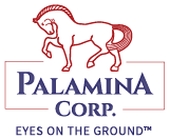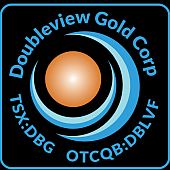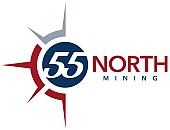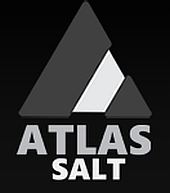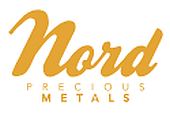 West High Yield drills 154 g/t Au at Midnight
West High Yield drills 154 g/t Au at Midnight
2022-12-20 12:22 ET – News Release
Mr. Frank Marasco reports
WEST HIGH YIELD (W.H.Y.) RESOURCES LTD. STRIKES MORE VEIN-HOSTED VISIBLE GOLD, REPORTS HIGH-GRADE ASSAYS FROM MIDNIGHT GOLD CLAIM
West High Yield (W.H.Y.) Resources Ltd. has confirmed additional high-grade gold assays (see attached table), including the identification of visible native gold in drill core from DDH (diamond drill hole) MN22-13, and has provided an update from the 2022 6,000-metre exploration drilling program. The 2022 program was completed and closed for the winter season on Nov. 15, 2022, at the company’s Midnight gold claim located in the Rossland gold camp area in British Columbia. The three drills at Midnight demobilized in October and November. A total of 6,197 metres were completed during the course of the program. The Rossland gold camp historically produced over 2.76 million ounces of recovered gold and 3.52 million ounces of recovered silver.
Highlights:
- 41 holes completed in 6,197-metre NQ2 diamond drilling program;
- Targets tested in historical Midnight, IXL and OK mining areas;
- Additional high-grade gold assays, including:
- MN22-13 — 72.35 metres to 72.65 metres depth — 154 grams per tonne gold (visible gold);
- MN22-13 — 185.7 metres to 186.20 metres depth — 21.4 grams per tonne gold (visible gold);
- MN22-08 — 38.7 metres to 39.4 metres depth — 15.85 grams per tonne gold;
- MN22-09 — 205.1 metres to 206.6 metres depth — 37.9 grams per tonne gold.
“We continue to intersect structurally controlled mineralization with visible gold in high-grade assay intervals such as those in MN22-13 northwest of the central Midnight mineralization (see [attached tables]). Assays using gravimetric and metallic screen protocols verified significant grades up to 154 grams per tonne gold in narrow intervals from 30 centimetres to 1.5 metres,” stated Greg Davison, PGeo, qualified person for Midnight. “Screen metallics of the highest-grade interval confirmed 996 grams per tonne gold in the coarse fraction, which contributed 58 per cent of the contained gold (MN22-13 — 72.4 metres).
“The high-grade gold occurred mainly within variably deformed and serpentinized peridotite showing moderate to pervasive quartz-serpentine-carbonate (listwanite) replacement transected by discrete quartz-dominant veins to 50 centimetres and sets of less-than-one-millimetre-to-10-millimetre veinlets with minor to sparse sulphides. Core intervals measuring up to 60 metres of massive, weakly altered peridotite, consistently with 5 per cent to 10 per cent disseminated to microfracture-controlled pyrite and/or pyrrhotite, intersected west of the Midnight and in the IXL, generally exhibited lower gold grades (0.2 to 2.0 grams per tonne gold). Leapfrog 2-D and 3-D mapping, with current and historical drilling and underground workings and recently flown high-resolution lidar topographic control, will be used to evaluate their geospatial significance in the mineralizing system,” said Mr. Davison. “Geological logging and 80 per cent of the half-core sampling (2,868 including QA/QC [quality assurance/quality control]) were completed prior to the winter shutdown. The remaining core intervals will be processed in a Q2 2023 program.”
A total of 31 collar locations are fully permitted for the current program. Assays received from 2077 core and QA/QC samples are reported to date for DDH MN22-01 through MN22-12, MN22-19a and MN22-19B with partial results for MN22-13, MN22-14 and MN22-21. Results are pending for samples for DDH MN22-13 through MN22-18, MN22-20, MN22-21 and MN22-28. Fifteen holes (593 samples) await core cutting and sampling.
Geological compilation and Leapfrog modelling of the current and historical drill and geological results are under way while awaiting assay results from approximately 781 core samples.
 |
 |
The 2022 program was focused on identifying extensions to zones of known Midnight mineralization, areas with potential within and peripheral to the OK and IXL historical mines and deep targets below the known footprint of mineralization. The drilling initially collared around the Midnight mine workings on targets from surface to 200 metres depth located to the southeast, east and north of the historical high-grade Baker vein. These geological targets occurred within and peripheral to the listwanite (quartz/carbonate/serpentine) zone that straddles the east-northeast-trending fault contact between the OK ultramafic intrusion and the Jurassic-age andesite-dominant sequence to the north.
West High Yield brought in a second and third drill to expand the area of immediate interest outside the Midnight-Baker targets and to explore additional and deeper targets from 200 metres to more than 600 metres transecting the andesite-ultramafic contact and below the Baker vein from the Midnight and neighbouring IXL claims.
The additional drills also targeted high-grade polymetallic gold-silver-copper-lead, massive to stockwork-style silicified andesite-hosted mineralization with pyrrhotite and pyrite reported and observed from the OK mine area historical drilling and is located between the OK portal and the upper raise on the OK claim 50 metres east of the Cascade Highway.
 |
Gold mineralization in the Rossland area is reported to depths exceeding 750 metres and several faults transecting the area are interpreted to have significant vertical displacement. Fault repetition or imbricate stacking of the principal lithologies is indicated by the current drilling. The abundance of surface and underground workings, including adits and stopes, and the intense brittle deformation and serpentine-rich alteration of the peridotite, provided significant challenges for collaring and completing several holes in the program.
Geochemical analysis, quality assurance and quality control
All core handling was conducted at the secure logging facility on Midnight. All samples were bagged and sealed with numbered security tags under the supervision of the qualified person and delivered to Overland Transport in Rossland for delivery to ALS Global in North Vancouver, B.C., for gold and multielement analysis. ALS is a facility certified as ISO 9001:2008 and accredited to ISO/IEC 17025:2005 from the Standards Council of Canada. Metal values disclosed herein are reported principally from sawn (one-half) drill core samples over intervals of 30 centimetres to 1.6 metres. Certain friable and broken intervals were processed using a rotary wedge core splitter. The remaining half-core samples are cross-stacked on site. Local chain of custody was monitored and maintained directly by the qualified person and project geologist under the direction of the qualified person.
The samples were crushed to 70% passing 2mm (PREP-31) and a split of up to 250 grams pulverized to 85% passing 75 micrometres (-200 mesh). Pulps (50gram split) were submitted for Au analysis by Fire Assay with Atomic Absorption finish (Au-AA23). The retained pulps also were analyzed by Four Acid Digestion followed by Inductively Coupled Plasma Atomic Emission Spectrometry (ICP-AES) multi-element analyses (ME-ICP61). Over-limit Au and Ag samples were analyzed by Fire Assay with Gravimetric Finish Ore Grade (Au-GRA21 or Au-GRA22, Ag-GRA21). Screen metallics assays were conducted on select one-half core samples to quantify gold distribution in the screen oversize (SCR-24B) and duplicate 50-gram pulps of the screen undersize (Au-GRA22). One 30cm sample of broken core with visible gold was sampled in its entirety through the SCR-24B protocol.
In-house quality control samples (blanks, standards, preparation duplicates) were inserted into the sample set using a protocol designed by the QP. ALS Global conducts its own internal QA/QC program of blanks, standards and duplicates, and the results are provided with the Company sample certificates. The results of the internal and ALS control samples are reviewed by the Company’s QP and evaluated for acceptable tolerances prior to disclosure. All sample and pulp rejects will be stored at ALS Global pending full review of the analytical data, and future selection of pulps for independent third-party check analyses, as requisite.
The Company’s Qualified Person (as hereinafter defined) believes that the sampling documentation, analytical protocols and quantitative data will withstand scrutiny for inclusion.
Qualified Person
Greg Davison, MSc, PGeo, Senior Consulting Geologist to West High Yield, is the Company’s internal qualified person (the “Qualified Person”) for Midnight and is responsible for approval of the technical content of this press release within the meaning of National Instrument 43-101 – Standards of Disclosure for Mineral Projects, under TSX Venture Exchange guidelines.
About West High Yield
West High Yield is a publicly traded junior mining exploration and development company focused on the acquisition, exploration, and development of mineral resource properties in Canada with a primary objective to develop its Record Ridge magnesium, silica, and nickel deposit using green processing techniques to minimize waste and CO2 emissions.
The Company’s Record Ridge magnesium deposit located 10 kilometers southwest of Rossland, British Columbia has approximately 10.6 million tonnes of contained magnesium based on an independently produced preliminary economic assessment technical report prepared by SRK Consulting (Canada) Inc. in accordance with National Instrument 43-101 – Standards of Disclosure for Mineral Projects.
We seek Safe Harbor.
http://www.whyresources.com/news/








